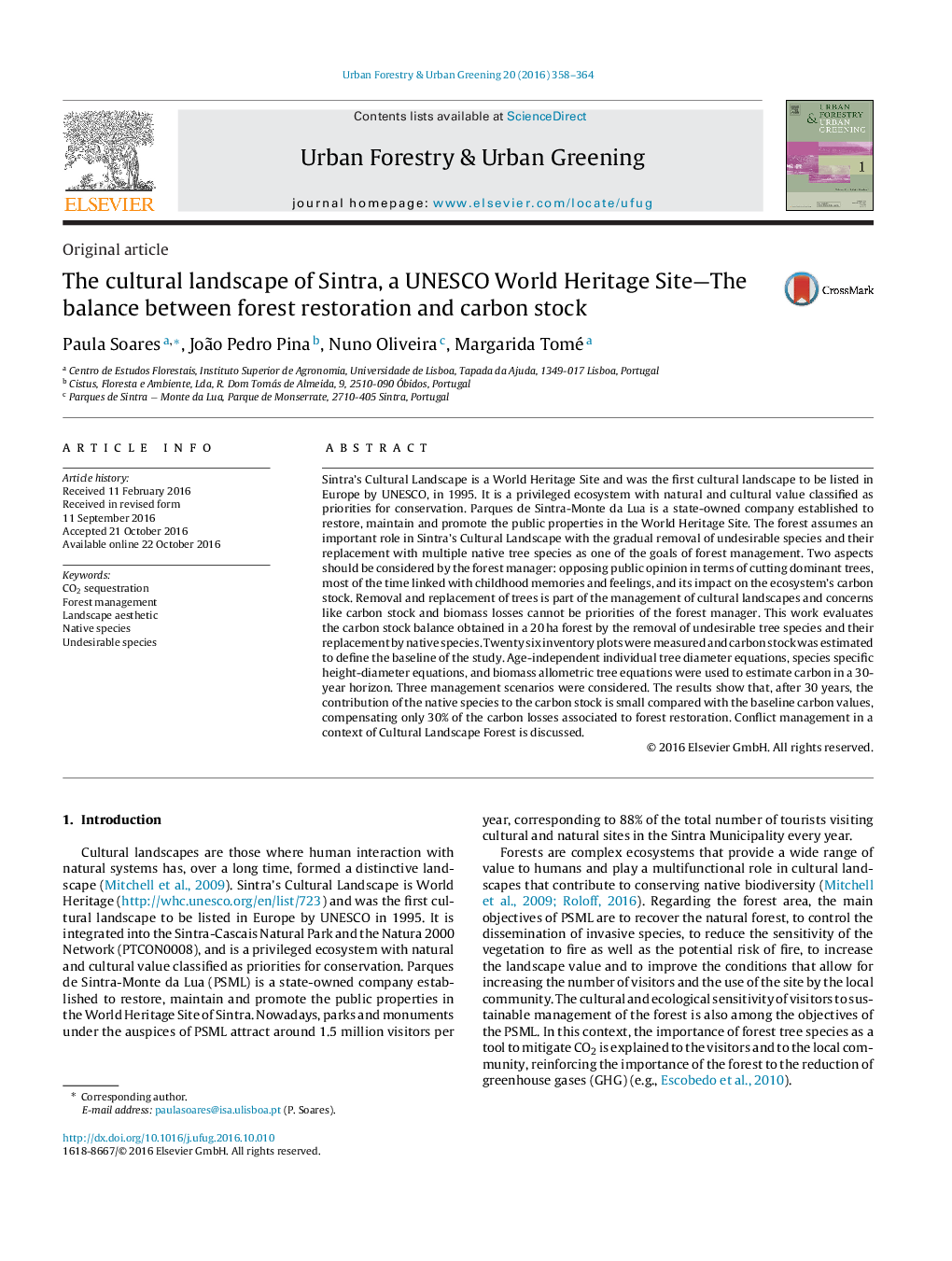| کد مقاله | کد نشریه | سال انتشار | مقاله انگلیسی | نسخه تمام متن |
|---|---|---|---|---|
| 6461966 | 1421870 | 2016 | 7 صفحه PDF | دانلود رایگان |

- Based on inventory carbon baseline is quantified in a Cultural Landscape Forest.
- Estimation of carbon in a 30-year horizon is made for three management scenarios.
- The replacement of dominant exotic tree species by native species is considered.
- We analyse how much the replacement with native species decreases the carbon stock.
- We discuss conflict management in a Cultural Landscape Forest.
Sintra's Cultural Landscape is a World Heritage Site and was the first cultural landscape to be listed in Europe by UNESCO, in 1995. It is a privileged ecosystem with natural and cultural value classified as priorities for conservation. Parques de Sintra-Monte da Lua is a state-owned company established to restore, maintain and promote the public properties in the World Heritage Site. The forest assumes an important role in Sintra's Cultural Landscape with the gradual removal of undesirable species and their replacement with multiple native tree species as one of the goals of forest management. Two aspects should be considered by the forest manager: opposing public opinion in terms of cutting dominant trees, most of the time linked with childhood memories and feelings, and its impact on the ecosystem's carbon stock. Removal and replacement of trees is part of the management of cultural landscapes and concerns like carbon stock and biomass losses cannot be priorities of the forest manager. This work evaluates the carbon stock balance obtained in a 20Â ha forest by the removal of undesirable tree species and their replacement by native species. Twenty six inventory plots were measured and carbon stock was estimated to define the baseline of the study. Age-independent individual tree diameter equations, species specific height-diameter equations, and biomass allometric tree equations were used to estimate carbon in a 30-year horizon. Three management scenarios were considered. The results show that, after 30 years, the contribution of the native species to the carbon stock is small compared with the baseline carbon values, compensating only 30% of the carbon losses associated to forest restoration. Conflict management in a context of Cultural Landscape Forest is discussed.
Journal: Urban Forestry & Urban Greening - Volume 20, 1 December 2016, Pages 358-364